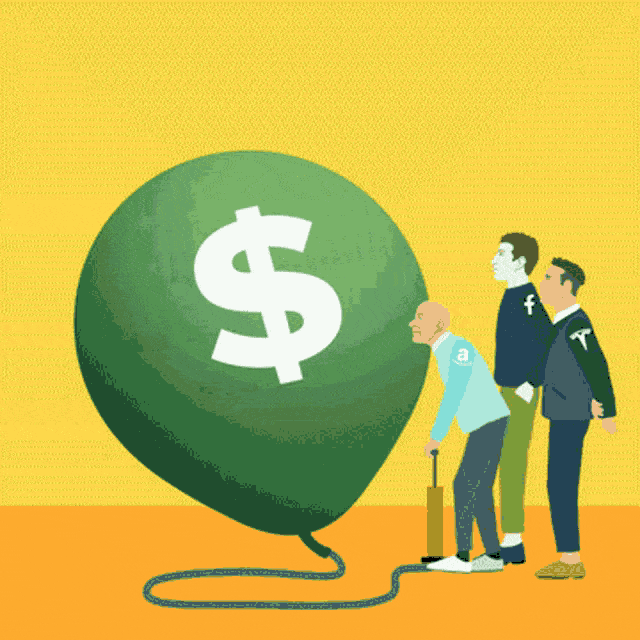|
Getting your Trinity Audio player ready...
|
This might come out a bit shocking when the world’s first economy, the United States, defaults on the bill, which can shake up the global economy. But doesn’t it put us into a lot of questions as to “How”? Let’s learn about why it is like that and look into a couple of things that might put you into thought.
It all comes down to understanding the intricacies of the situation rather than just panicking about the shaking of the Global Economy. In the news, it’s usual to come across the verdict that “Congress has to increase the debt ceiling”. But in fact, why do that?
There’s a national debt that has accumulated
Like every other economy in the world, the US as well has a system that it abides by. Well, national debt being the conventional phenomenon that happens in every economy, it’s quite essential to know about the “National Debt” concept.
Think of a credit card when you swipe it for expenses more than you can pay on time. Similarly, an economy sometimes overdoes the expense than the revenue generated. That’s when the crunch occurs called a “Budget Deficit”.
To make up for the Budget Deficit, the Government in our case the Federal Government will sell securities like Treasury Bonds, Bills, etc to borrow money from investors at some interest rates associated with it.
So national debt means the money borrowed by the government over time to pave away the balances of the expenses it made. But when the government increases borrowing, the national debt increases as well.
So if you think, what bill is it unable to pay? Currently, the government is in a crunch to pay the money to the investors from whom they borrowed. Basically, the default is on the country’s Sovereign Debt.
Where is the money being spent by the way?
The US Government prioritizes the welfare of the people above all. The spending activities are generally in categories like income activity, social welfare, health, national defense, and medicare. These are the categories where its expense is mostly used.
Coming to the main question!
The psychology of investors!
Why does the Debt Limit have to be increased?
Here comes the concept of Debt Ceiling also known as Debt Limit. It was in the 20th century when this came into force that Congress has to authorize the money it borrowed once it reaches the limit as per the Constitution.
The purpose of this debt ceiling concept was to run the government smoothly but now it seems like making a lot of trouble. Currently, the US Government has a national debt that has crossed $31 trillion while the borrowing cap is now at $31.381 trillion. The US government technically reached the Debt Limit last time on Jan 19th. Now the point has come yet again.
The catch is, earlier the government implemented “Extraordinary Measures” to curb government investments for the time being, but now the stake is on increasing the Debt Limit itself. This question is posed as there are possibilities that the US government may run out of cash by Jun 1, 2023.
So the Debt ceiling is the maximum limit on the money that the US Government can borrow to meet its obligation of meeting the national debt.
Now when the US Government has no means of cash and there is no way it wants to default, the viable option seems to be to increase the debt limit, otherwise the consequences are disastrous and unimaginable. Congress seems to be against increasing the Debt Limit at the moment though.
The fact is since 1960, the US Government has raised the Debt Limit at least 78 separate times now. So will it fail to do so this time? It is still unanswerable at the moment.
It still holds good to know our curiosity in the next question.
Will cryptocurrency be regulated?
Why can’t the US print money?
This might be an obvious reason for people to know how the US government could pay off their debt. After all, it’s the Government and they can easily print it, right? It shouldn’t be a big deal to them.
But stop right there, it is in fact a big deal!
As easy as it may sound to print the money, it isn’t. It can lead to a disastrous situation that we can’t think of. It’s nothing but Inflation.
Yes, surely the US Government can pay the debt with that money, but the consequences of paying become much more than what it pays now when considering the latter situation.
It’s like the dollar losing its intrinsic value such that paying for the same goods becomes much more expensive as the prices of the goods increase. Imagine when the price of the egg rises, paying for the basic goods seems like a big deal, then paying for the costlier items becomes costlier than ever.
One such incident of printing money during a pandemic absolutely poured the money into the economy but the inflation rate had increased and remained the same at least for 3 years at 6.4%.
So it’s more like chasing the same rat with too much money.
The control of the money supply is in the hands of the Federal Reserve and its agenda is to maintain the stability of the money.
The value of the money is on the grounds of the good word of the government and since we all agree to it, we believe the paper bill has a value. Earlier the money was backed by Gold. Printing money was costlier as Gold has inherent value with it.
So why create inflation? Hence better not to print the money.

Well, if they can’t print the money and the Congress fails to increase the debt limit then what is it signifying?
A serious issue of “Recession” or a “Shake in the US Economy”
What’s in the net zero ambition of India?
A recession may look like this
In case of a prolonged scenario of default, the possibilities are that the US might fall into recession. The impact due to it looks something like this:
1. Quick selling off treasuries
The first and foremost trade-off will be losing all the investors who invested in US treasuries and discomfort to those investors who took loans against these treasuries might have to look for more secure loans instead.
When the US borrows in the future, it might turn out to be expensive. Drastic ups and downs in the interest rate can be seen. While as well witnessing the devaluation of the dollar against other currencies in the world.
2. Fall in the global trade
Most countries indeed rely on the US for their imports and they might stop those purchases from the US. And at the same time, other countries who indulged in exporting to the US can face a hard hit on their income due to the crisis.
In the long run, the trade can fall when the dollar loses its value as purchasing supplies becomes expensive.
3. Dollar-dependent economies may suffer
Most of the economies have incorporated dollars as their currency while some peg it with their domestic currency. When de-dollarization takes place, countries might see the dollar’s purchasing power to have exhausted.
4. Reliance on the dollar contracts gets impacted
Countries that have made contracts in dollars might receive their settlements being paid at a lesser value than what is expected. It’s true for both companies and individuals having dollarized contracts.
5. Capital outflows more than inflowing
Usually, the global markets pour in their capital in the US, but due to this drastic situation, the resultant interest rates spike might push the investors away as they would have lost their trust in the government.
Wrapping up the thoughts
How the situation is being handled in the US market is up to the government and it isn’t predictable. Whereas a growing economy like India has less borrowing comparatively and they have a strategic measure in handling the national debt to have not defaulted on the bills so far.
Certainly, overseas investors must be aware and cautious in this aspect before investing.






